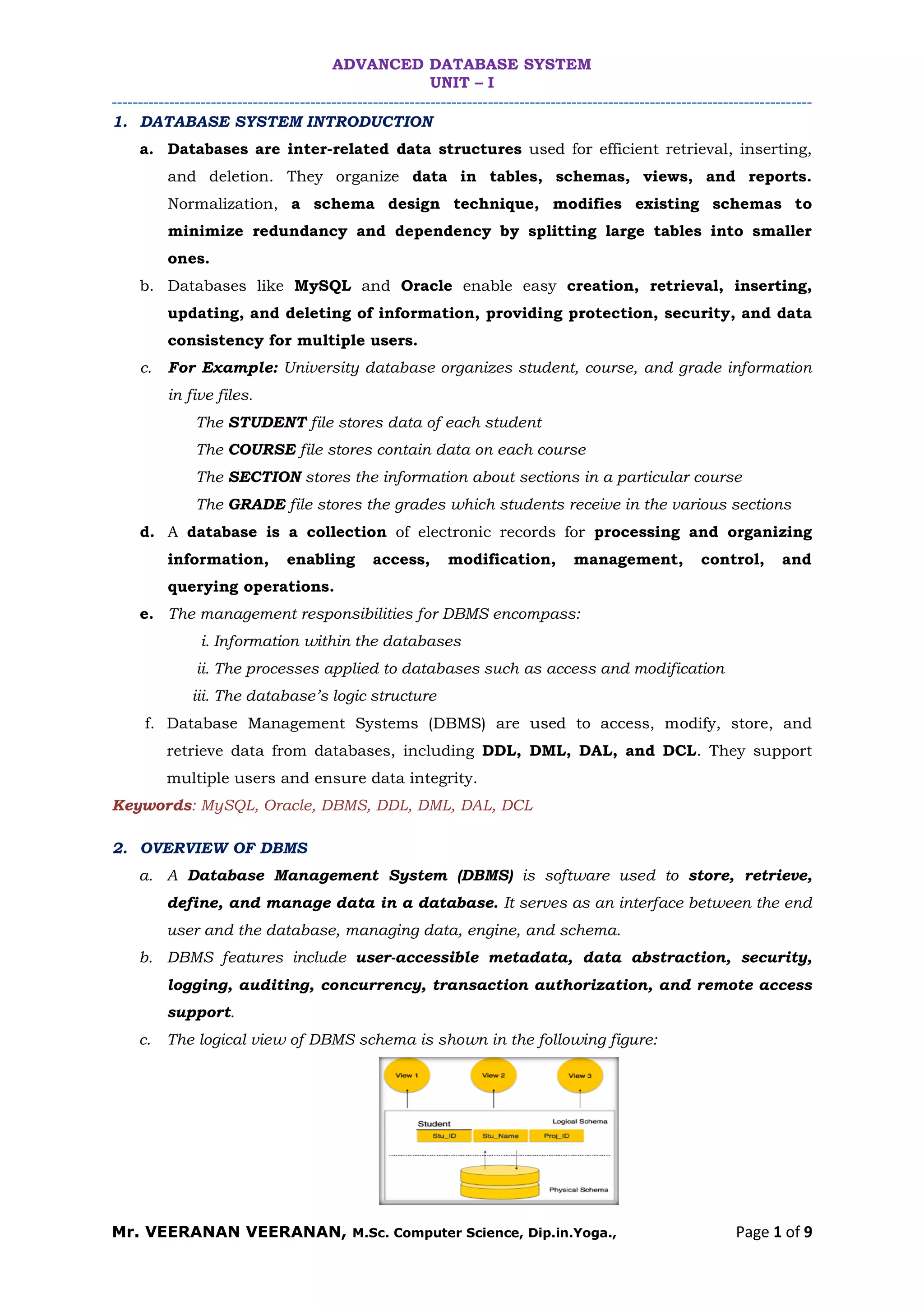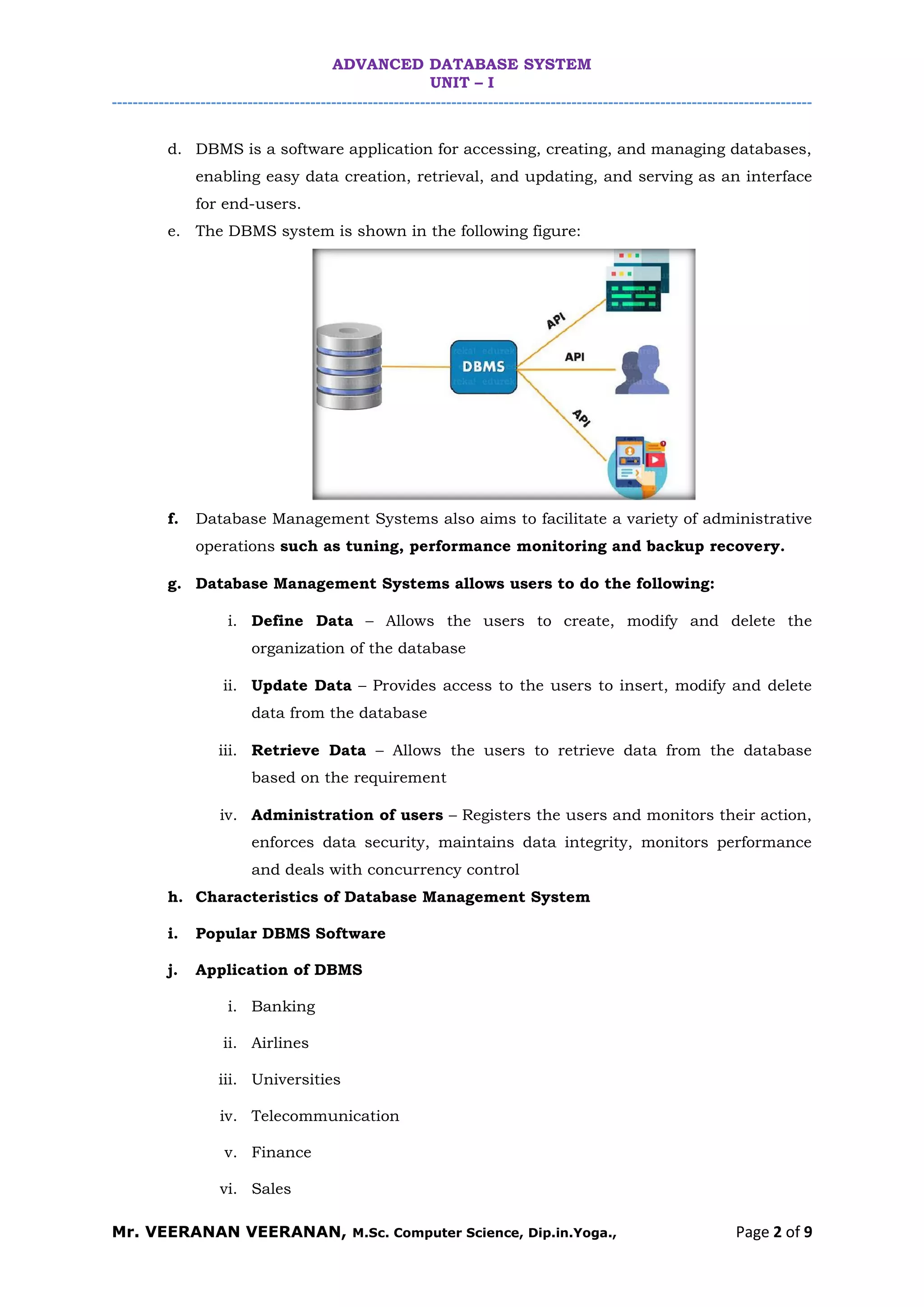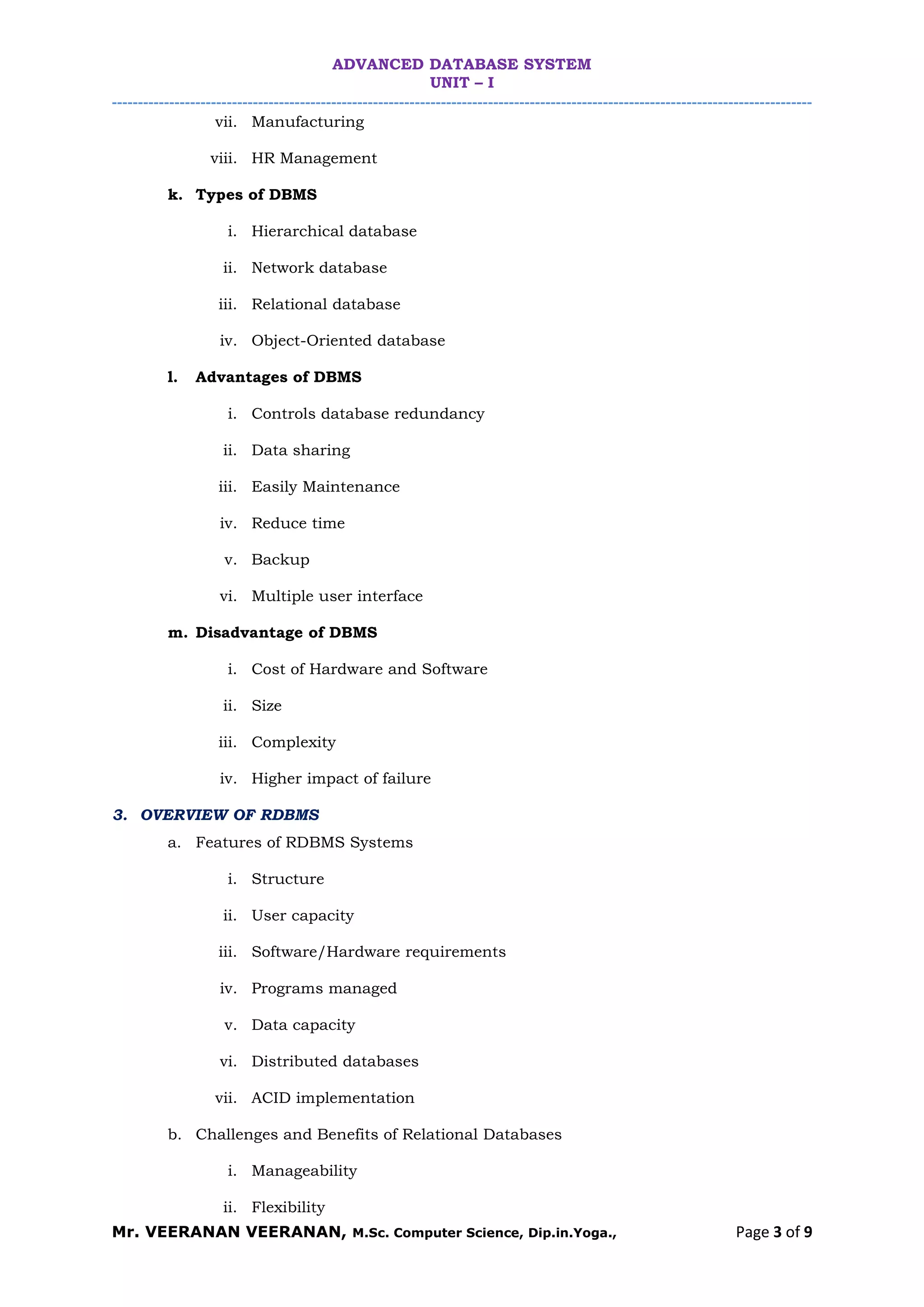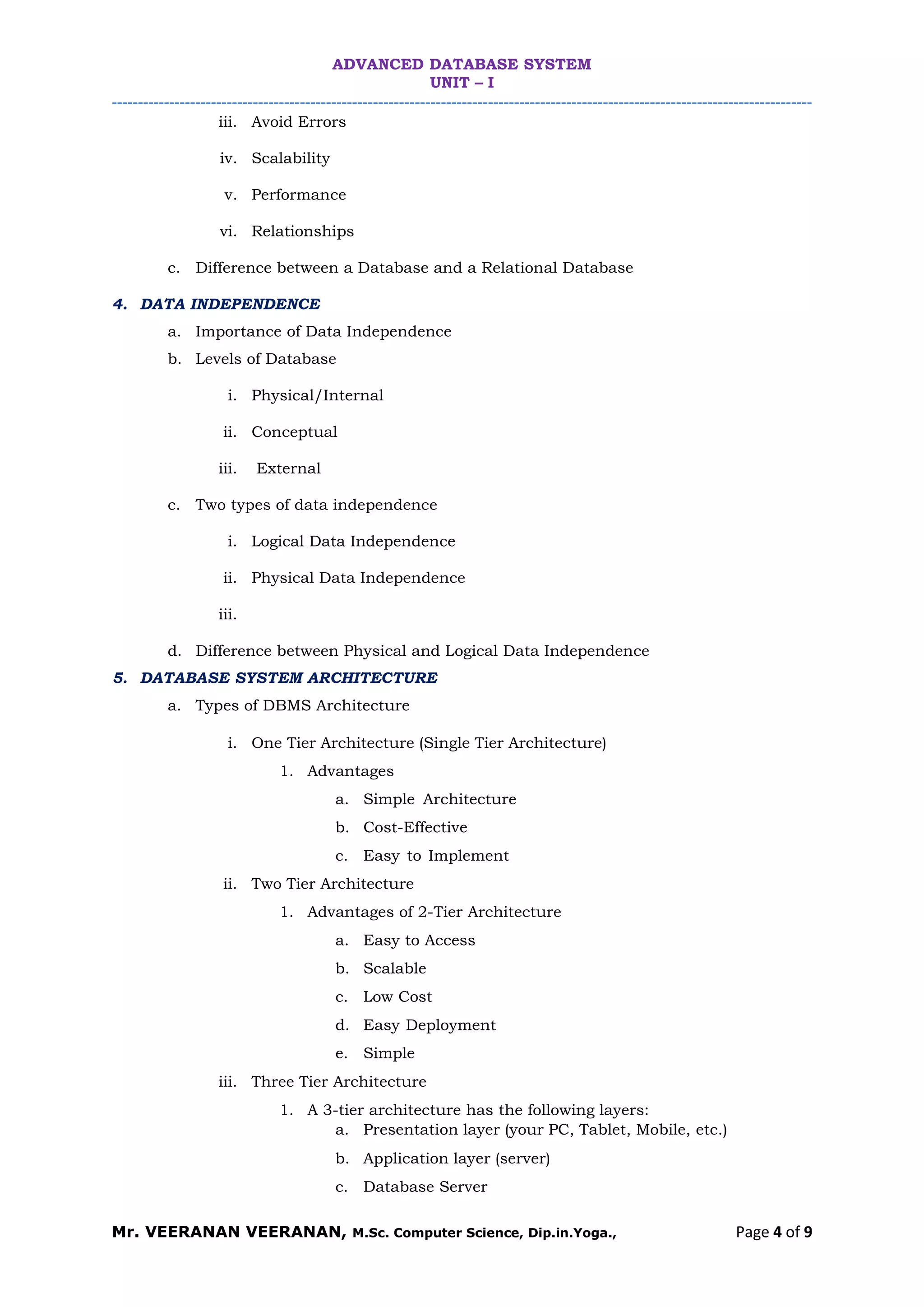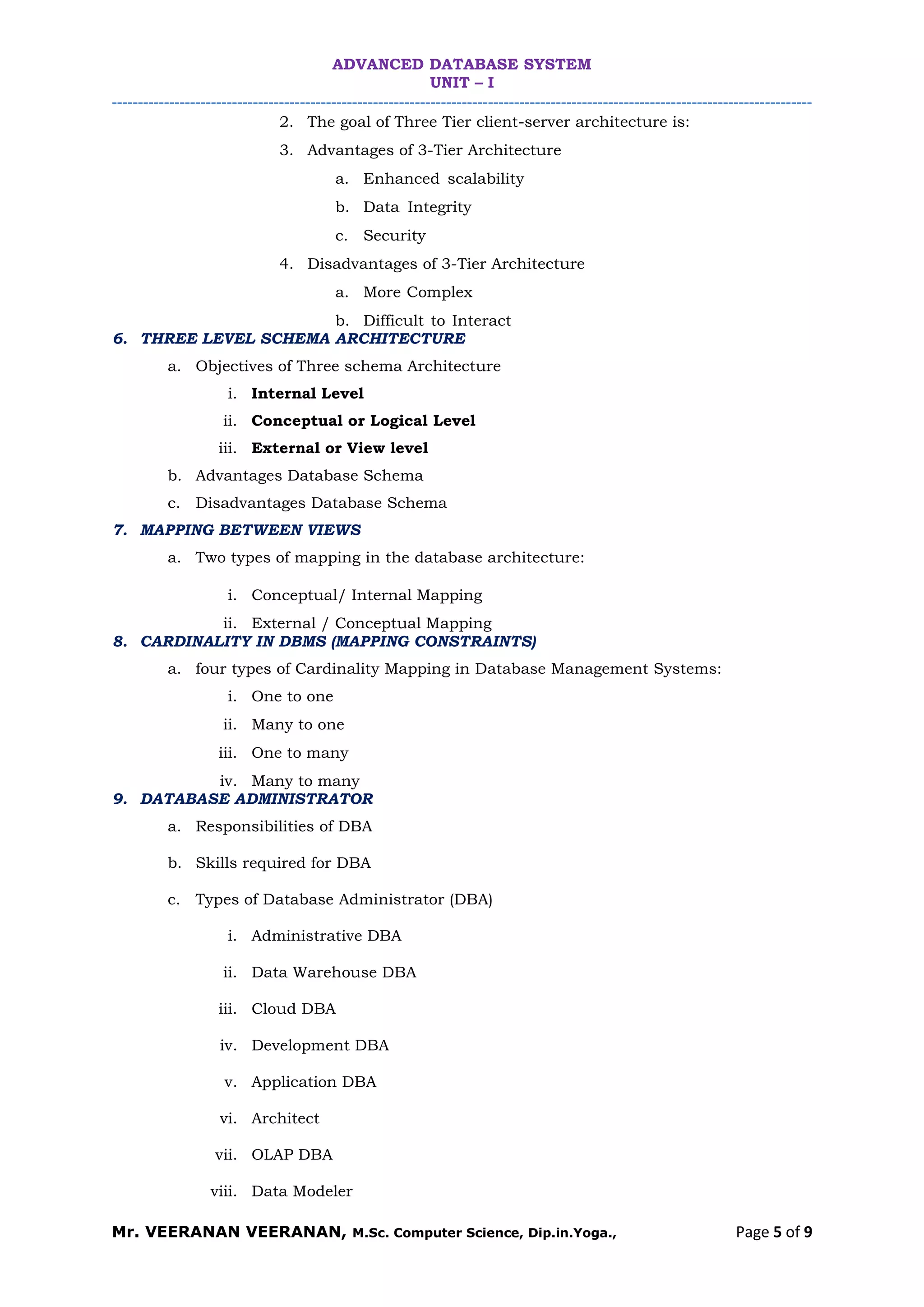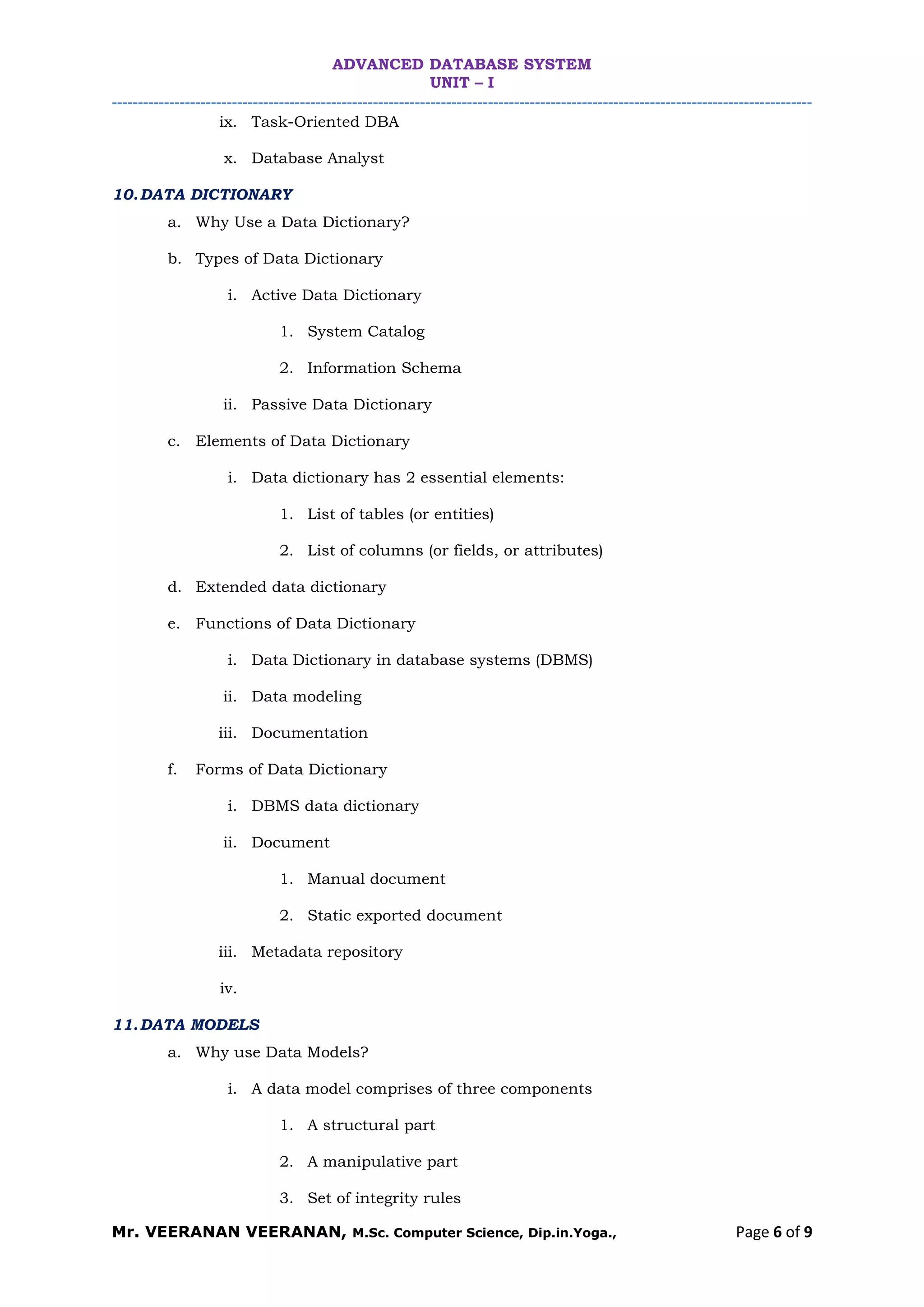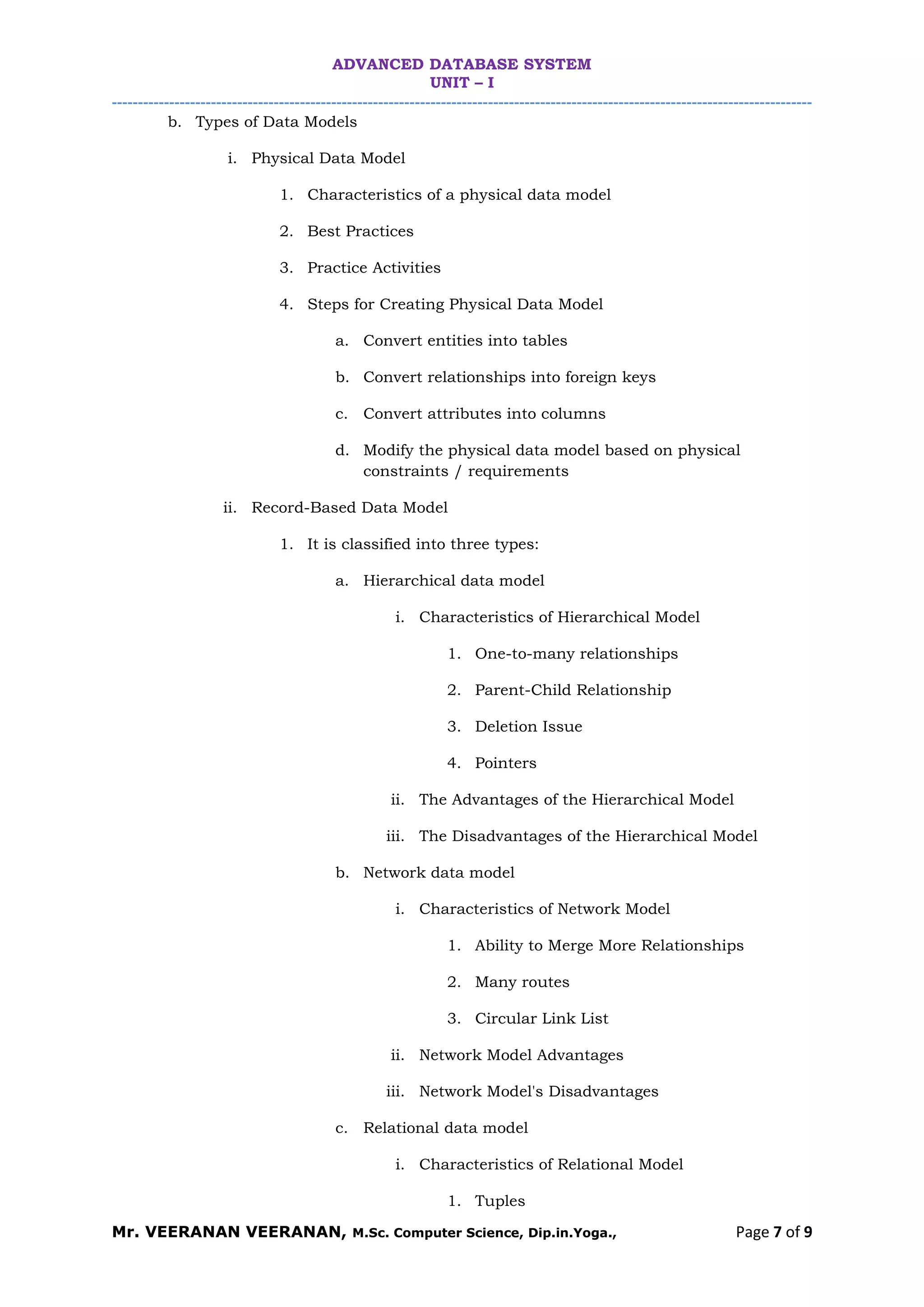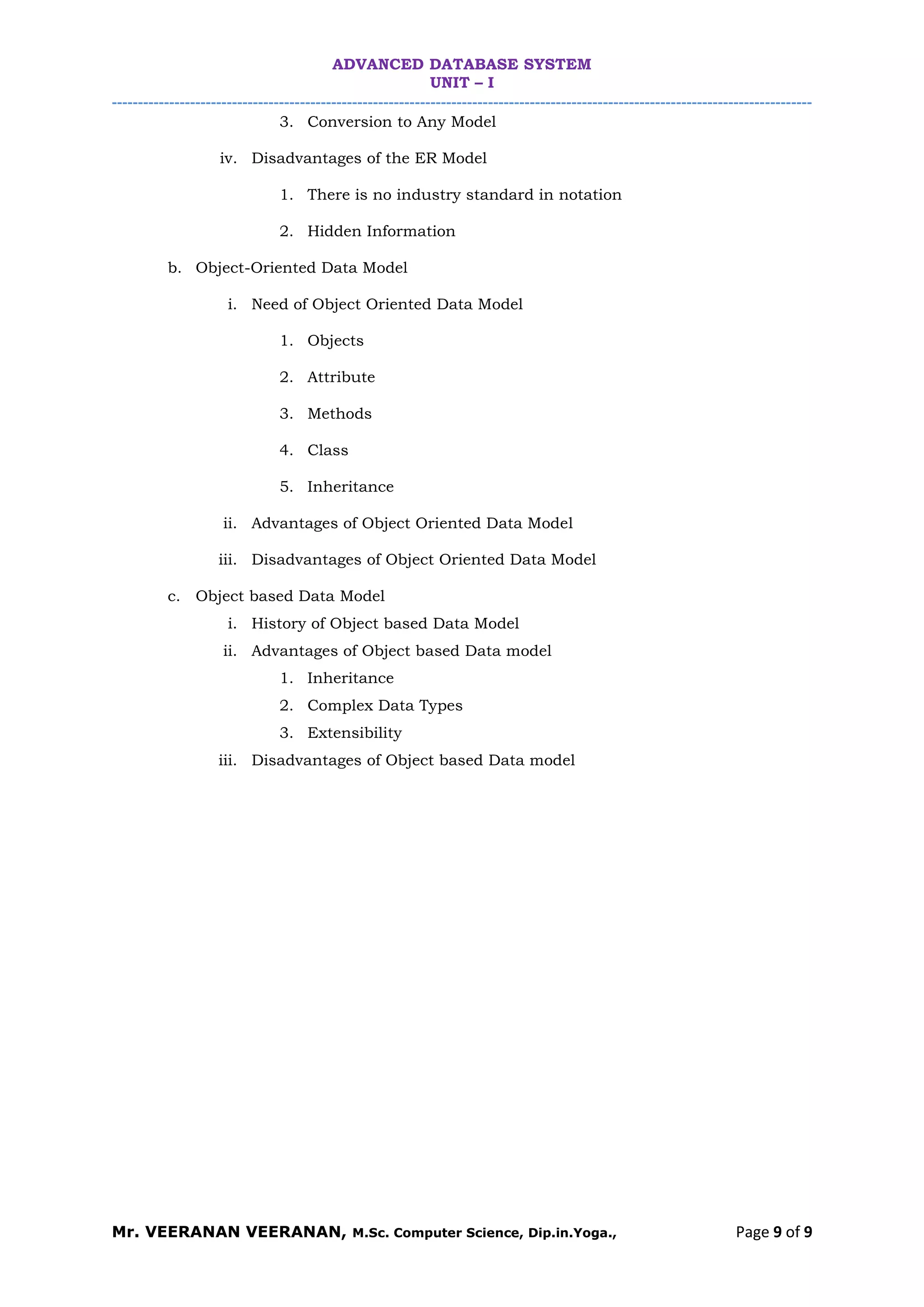This document provides an overview of database systems and concepts. It discusses database management systems (DBMS), relational database management systems (RDBMS), database architecture including one-tier, two-tier and three-tier architectures, database schemas, data modeling, data dictionaries, and different types of data models including hierarchical, network, relational, and object-oriented models. The document is serving as a textbook for an advanced database systems course, covering fundamental database topics in the first unit.
